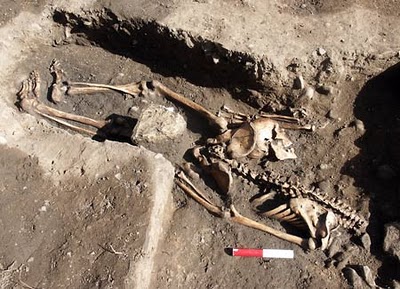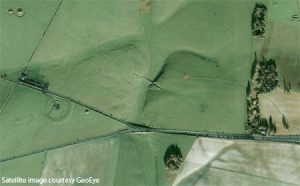 When the British Museum is explaining why they should not return the Elgin Marbles – and how they acquired them in the first place – they often offer two old letters as proof of their entitlement on the Parthenon Friezes: a copy of letter written by Philip Hunt talking about the ‘Firman’, a letter of permission, as well as a translation of the Firman in Italian dating to 1801. But was ‘feel free to ship half the Parthenon to Britain’ really what the Ottoman Firman said?
When the British Museum is explaining why they should not return the Elgin Marbles – and how they acquired them in the first place – they often offer two old letters as proof of their entitlement on the Parthenon Friezes: a copy of letter written by Philip Hunt talking about the ‘Firman’, a letter of permission, as well as a translation of the Firman in Italian dating to 1801. But was ‘feel free to ship half the Parthenon to Britain’ really what the Ottoman Firman said?
In a recent statement Neil McGregor, director of the British Museum, said on the removal of the Parthenon marbles from Greek soil that “there’s no question it was legal because you can’t move those things without the approval of the power of the day. It was clearly allowed, or it it wouldn’t have happened.”
The British Museum in an official statement – and after pointing out that the Louvre, the National Museum in Copenhagen, the Wurzburg University, the Vatican Museums, the Glyptothek in Munich and the Kunsthistorische Museum in Vienna hold sculptures from the Parthenon in their collection too – denies that the collection was “stolen” by Lord Elgin because “Lord Elgin’s work was carried out openly and with the support of local officials both Turkish and Greek.” Surely, the Firman letter will prove that the removal of the Parthenon sculptures was legal?
What does the Firman letter say?
We need to keep in mind that the Firman letter in possession of the British Museum – it was on public display from October 2008 to April 2009 – is a translation to Italian from the original document, which was lost in time. The translation was made by the Venetian dragoman (translator and diplomatic negotiator) Antonio Dan so that Lord Elgin and the Rev. Philip Hunt might know exactly what the Turkish document said. The British Museum still displays the document on it’s website and supplies us with a English translation.
The Firman letter speaks of English painters employed by Lord Elgin, which should be not hindered in making models of the ornaments and visible figures, in measuring the remains of the ruined buildings nor “… in undertaking to dig, according to need, the foundations to find the inscribed blocks, which may have been preserved in the rubble…“
But surely, they were allowed to take some memorabilia home? The translation of the Firman letter says on this: ” …and when they wish to take away some pieces of stone with old inscriptions, and figures, that no opposition be made… .” A the end the Firman letter changes its tone: ” … nor hinder them from taking away any pieces of stone with inscriptions, and figures, … .“
It does sound like a carte blanche to chisel parts of the Parthenon? The British Museum certainly believes so, in their statement it asserts that there was no exclusion clause concerning removal of material from buildings and walls, based on that final fragment of the Firman letter.
Reading between the Firman letter’s lines
CultureGrll – Lee Rosembaum for ArtsJournal.com – took a look at the Firman letter, and concludes that what has come down to us through the translation seems to fall far short of blanket permission for Lord Elgin and his men to hack slabs of the famous frieze from the walls of the Parthenon. Lee Rosembaum points out we should look at the context of the previous parts of the letter:
But reading the phrase that permitted removal of “any pieces of stone” in the context of what came before it—the reference to objects “preserved among the rubble”—makes it appear likely that intent of this convolutedly worded edict was to allow removal of loose pieces at the base of the monument, not of the frieze slabs still affixed to its walls.
You can access it and try to decipher it for yourself, but It seems to me that a close reading of the English translation of the firman undermines, rather than supports, the British Museum’s legal argument. Maybe that’s why MacGregor is now arguing that the removal was “legal” because Ottoman officials obviously knew what was going on.
Lee Rosenbaum also points out she’s not the first to have such opinion. She quotes the ‘The Parthenon Frieze’ book by Jenifer Neils, professor of art history and classics at Case Western Reserves on the issue:
The official firman…does not specifically grant authority to remove the superstructure of the temple, but rather to ‘carry away some pieces of stone with inscriptions and figures’ (presumably those lying around the Acropolis after the explosion of 1687). (‘The Parthenon Frieze’, p. 241, Jenifer Neils)
What do you think? Did Lord Elgin get his marbles only due to a loophole, and ‘administrative error’? Should we judge Lord Elgin according to the times he lived in, and on his good intentions to improve the arts of Great Britain by making available casts and drawings of Greek monuments previously known only from drawings and engravings as the British Museum suggests? (No mentioning of chiselling there.) And what about a full transcription of Reverend Philip Hunt’s letter, in which he laments the damage being done to the sculptures of the Parthenon? And last but not least:
Should the Parthenon statues be returned to Greece?



